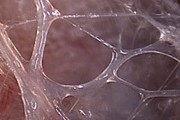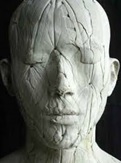WHAT IS FASCIA?

What is fascia?
Fascia is an interconnected layer of tissue that covers everything in the body. This includes muscles, bones, blood vessels, nerves, organs, and everything in between. It is made up of a combination of elastin (fibers that are stretchy), collagen (fibers that have plasticity), and ground substance (fibers that are gelatinous). Just like the guidewires of a tent, it provides support to all aspects of the body.
What happens to the fascia in response to trauma?
Fascia undergoes constant reorganization in response to physical trauma, whether it is something minor, like tripping on a curb, or something more extensive, like getting in a car accident. It can also be affected by other factors such as emotional trauma or poor body mechanics.
In response to any of these stressors, the fascia lays down extra collagen fibers and the ground substance solidifies like cement.
As a result, when the fascia becomes restricted, it creates lines of tension that can exert 2,000 lbs per square inch of pressure on the structures it surrounds. With that amount of pressure, the body can develop symptoms that will not show up on diagnostic tests (including x-rays, MRIs and CT scans).
Sometimes, symptoms can be felt in an entirely different location from where the restriction originated. Imagine a snag in a sweater. It can start at the bottom, but then it travels all the way up to the top and maybe even crosses to the back of the sweater. The same thing can happen with the fascia because it is three dimensional and spreads throughout the body like a web.

How can myofascial release help?
Myofascial release is a holistic therapeutic approach that incorporates gentle, sustained pressure applied to the fascial network. This promotes a release of the fascial tension, which in turn alleviates the associated symptoms that are felt throughout the body. Therapists who practice myofascial release (MFR) incorporate regular postural and soft tissue assessments to determine where restrictions are felt and how to most effectively treat them. At PT 360, we have several therapists with training in MFR. Stop by one of our clinics or give us a call if you are interested in learning more!


